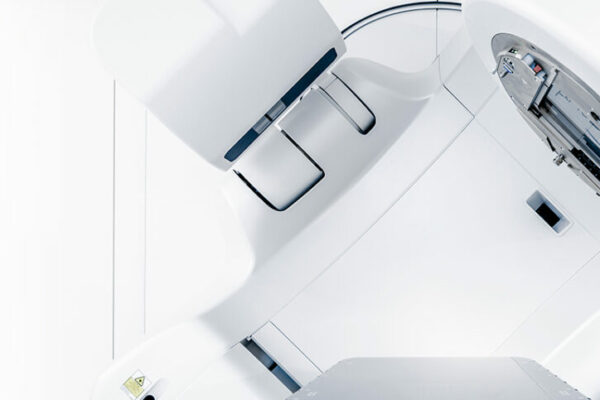
Breast Cancer
Breast cancer is the most common cancer in the UK. Almost 60,000 women are diagnosed with this disease every year. One in eight women will develop breast cancer in their lifetime.
Contact UsWhat is Breast Cancer
Breast cancer is the most common cancer in the UK. Almost 60,000 women are diagnosed with this disease every year, with an extra 7,400 breast cancer sufferers diagnosed with an earlier, non-invasive form, confined to a specific area of the breast (usually milk ducts) but which may later acquire the ability to spread.

We work together to combine the highest levels of consultant-led care and patient choice with the most advanced knowledge and understanding of the disease and its forms.
Learn More About Breast Cancer
One in eight women will develop breast cancer in their lifetime. It is much less common in men, with approximately 1% of all breast cancers occurring in men.
It is key for you to become familiar with how your breasts look and feel so you know what is normal for you at different times of the month.
If you have any concerns about your breasts you should make an appointment with your doctor who will either reassure you or refer you to a specialist.
We don’t know the causes of breast cancer but we do know that it can be influenced by factors such as, your age, lifestyle or family history.
Male breast cancer is not common.
The main difference between men and women’s breast tissue is down to hormones. In women, there are various hormones in the body which stimulate the breast tissue to grow into full breasts (while there may be times men develop actual breast gland tissue, it is usually because they have abnormal hormone levels or are prescribed particular medicines).
The symptoms for male breast cancer are the same for those of women.
Symptoms
Some symptoms of breast cancer can be:
- A change in size, shape or swelling
- Changes to the nipple, shape, direction, inversion or flattened, or any unusual discharge, rash, crusted or flaky skin
- Changes to your skin such as redness, dimpling, or puckering
- Swelling around your collarbone or in your armpit
- Any size lump or thickening
- Constant pain in one part of your breast or underarm
Diagnosis
Mammogram A Mammogram is a low-dose x-ray which take pictures of the breasts. Each breast is x-rayed from both the side and the top by a radiographer.
Breast Ultrasound When something suspicious has been found or suspected during a mammogram or self-examination, a breast ultrasound is to create images of the inside of your breast, to determine the precise location of a lump and whether that lump is a solid or fluid-filled lump.
MRI Scan In some cases, ultrasound and mammograms may have difficulty picking up the cancer or may underestimate its size. In these cases, your doctor may recommend a MRI scan of the breasts.
Fine Needle Aspiration This procedure is when a fine needle is inserted into a breast lump by a surgeon who attempts to withdraw fluid.
Biopsy If, during an ultrasound, you are found to have a solid lump, a biopsy will remove some tissue which is then tested and the results discussed with you
Treatments available at Clatterbridge Private Clinic

Targeted Drug Therapies Immunotherapy
What is Immunotherapy? Immunotherapy use elements of the immune system to help treat the Cancer. Immunotherapy activates a person’s own immune system to identify and target their cancer. You may have immunotherapy on its own, or in combination with other cancer treatments, such as chemotherapy. There are different types of immunotherapy. These include monoclonal antibodies, checkpoint inhibitors, vaccines or tumour infecting viruses. Immunotherapy and our immune system Our immune system works to protect the body…
Learn more
Intensity Modulated Radiation Therapy (IMRT)
A simple analogy for IMRT is a shower nozzle that discharges multiple streams of water in different directions, with each stream able to be turned on or off, or pre-set to deliver different intensities. This is not like standard radiation techniques with only a constant flow of radiation from each beam. IMRT is an advanced form of 3-D conformal radiation therapy that lets doctors customise a radiation dose through modulation, varying the amount of radiation…
Learn more
External Beam Radiation Therapy (EBRT)
EBRT is delivered via a machine known as a linear accelerator. This produce high-energy external radiation beams that penetrate the tissues and deliver a dose of radiation deep into the cancerous areas. This technology, as well as other state-of-the-art techniques, have empowered oncologists to reduce considerably the side effects of the treatment and improving the delivery of the radiation. It is typically given in an outpatient setting for about 3 to 7 weeks. EBRT starts…
Learn moreLet's Talk
Fill in your details below and a member of our Patient Care Team will be in touch.Our Trusted International Healthcare Insurance Partners



















